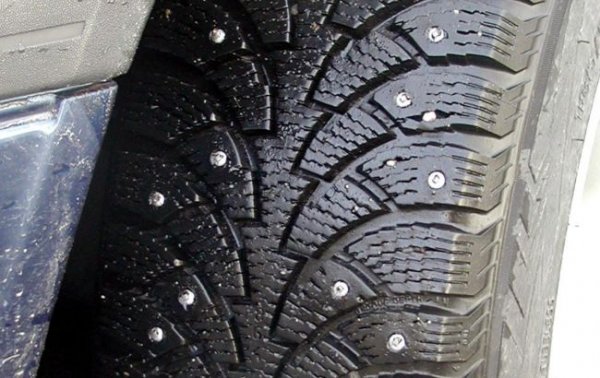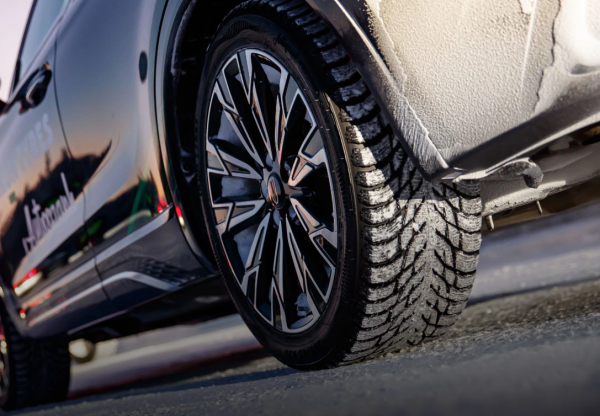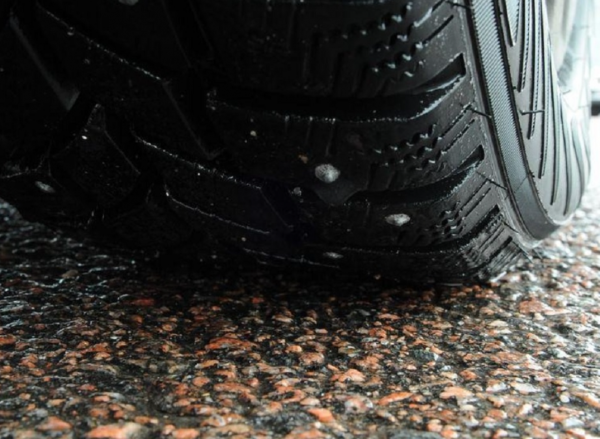
Photo: car on studded tires in summer (wikimedia.org) Author: Konstantin Shirokun
Due to global warming, studded tires are going out of fashion here, but that's no reason to send them to the dump. The most radical motorists would be happy to use the rest of the studded tread in the summer – but how safe is it?
Read about what to do with extra studded tires in the summer in the RBC-Ukraine article.
First of all, let us remember that there are no laws prohibiting driving on winter tires in the summer. This means that there is no ban on studs in the summer in Ukraine. (Another thing is that in many European countries studs are also prohibited in the winter, but that is a topic for another conversation).
Differences between winter and summer
First, let's recall the differences between summer and winter tires. There are only two of them: different qualities of the rubber compound of the tread and different nature of its pattern. Accordingly, the rubber and pattern of each type are better suited to the seasonal condition of the road surface.
This means that the rubber compound of a winter tire retains its elasticity even in severe frost, so that each tread block fits tightly to the micro-roughness of the asphalt – due to which the wheel holds the winter road well. At the same time, the grooves and lamellas cut on the winter tread cling well to snow and ice, and the summer tread blocks are better suited to dry asphalt. It is clear that in “foreign” road conditions, or more precisely, in a “foreign” season, each tire will work ineffectively. Moreover, if a winter tire is simply ineffective in the summer, then a summer tire is frankly dangerous in the winter.

Disadvantages of winter tires in summer
The winter rubber compound itself is very soft, and on hot asphalt this quality begins to interfere – the grip of winter tires on the road in summer leaves much to be desired.
Therefore, for winter tires on a hot surface:
Longer braking distance . When braking hard, wheels on winter tires will skid earlier (or the ABS system will start working earlier, extending the braking distance).
Greater tendency to skid (wear) when maneuvering at speed. When cornering at excessive speed, the car will try to float out of the corner earlier than it would on summer tires.
The worst steering sensitivity. This is, by and large, a sports characteristic, and the average driver is unlikely to feel such a drawback. And yet, we will say that soft winter tires on warm asphalt poorly transmit small steering wheel movements.
So, from the point of view of our topic today, driving in the summer on winter tires is quite possible, although not as boldly as we would like. But don't studs add their own nuances?
Thorns and summer
Testing of studded tires in summer conditions has been carried out by experts repeatedly. And, strangely enough, there are no significant differences in the behavior of studded and non-studded winter tires in summer.
As you might expect, metal studs reduce the tire's contact area with the road. But in most models, this disadvantage is offset by the softer rubber of the tread, which is typical for arctic models (including studded ones).
Other disadvantages of studs in the summer do not concern safety issues at all. For example, studded tires are noisier. And on warm asphalt, “toothy” tires quickly deteriorate – the studs overheat in their sockets and, not having the cooling of snow (ice), fry the rubber around them. Therefore, the socket does not hold the stud and it falls out. Driving with lost studs is not prohibited, although from a technical point of view this is wrong. And finally, it is worth remembering that winter tires wear out very quickly in the summer.

Short
It is what it is – driving in the heat with studded tires is not quite right, and even a little strange. But if you drive your family car carefully, without resorting to sporty techniques and without bringing things to critical situations, winter studded tires on a summer road can be considered quite acceptable – although not without the reservations mentioned above.
In preparing this article, materials from Autobild and Autocentre were used .
Let us recall that RBC-Ukraine recently reported why pedestrians are not always right.
